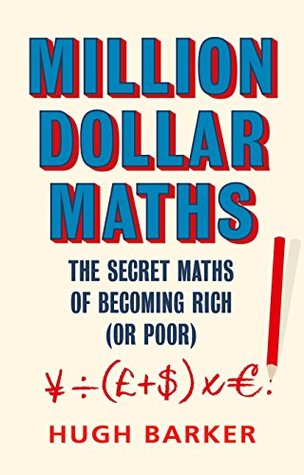Book Review – Million Dollar Maths by Hugh Barker

Given that I am a particularly mathematically minded individual (yes, I actually did enjoy maths in high school), when I first saw this book, I was actually really excited because I had hoped it would really speak my language. I was looking forward to some pretty cool maths tricks which might help explain some of the finer points of perfecting investing for instance.
Did the book live up to my expectations? Unfortunately, no not really. I still found it interesting enough to read, but I do not think it really provided any significant insight to help out with investing in general.
There were only a couple of chapters that were relevant to investing:
Chapter 1: The Power of Exponential Growth
Chapter 4: The Successful Investor
Chapter 1
This was basically a summary of the power of compound interest, and while I do always like to see this brought up in financial books, I have read it several times before, but it still blows my mind every time I see it again.
This chapter did also talk about exponential growth in terms of building a business as well. Nothing too ground breaking, just making sure demand is high if you are to increase supply, this sort of thing.
Chapter 4
This chapter was probably the most useful chapter in terms of financial advice, as there is a lot I still do not know about analysis of stocks. This is definitely one area of research that I do want to delve a lot further into, so I was definitely appreciative to get a bit of a teaser in this chapter. The chapter provides some interesting formulas that can be used to analyse individual stocks that I will definitely be looking more into. Not only this, but it does actually explain with formulas how correlation coefficients are calculated, as well as covariance. This is immensely useful to get an understanding of why diversification is so important.
What Else Does the Book Cover?
While the rest of the book may not be the most useful in terms of directly helping finances, it does show some interesting quirks that we have in our society. Talking a lot about gambler’s fallacies and poor logic, betting strategies that are proven false by mathematics as well as how graphs of data can be deliberately misleading for a variety of reasons.
There was also a chapter on “Designing The Next Google” and to be honest, a lot of this was well over my head, algorithms, how bitcoin (or other cryptocurrencies) can help, as well as blockchains. It was definitely enough to confuse me so a lot of this information did not really sink in.
The book also talks about the development of probability over time, from when the first mathematicians first started playing games of chance, and how early understanders of probability were able to make money playing these sorts of games because the House was behind them in terms of understanding.
Conclusion
Overall, I did enjoy the book, it was easy to read and did provide some useful information. But if I was looking for a book for pure financial guidance, then this one would not be on the top of the list to get. If you do have an appreciation for maths, and in particular, probability, then you may find this book to be an interesting read though.